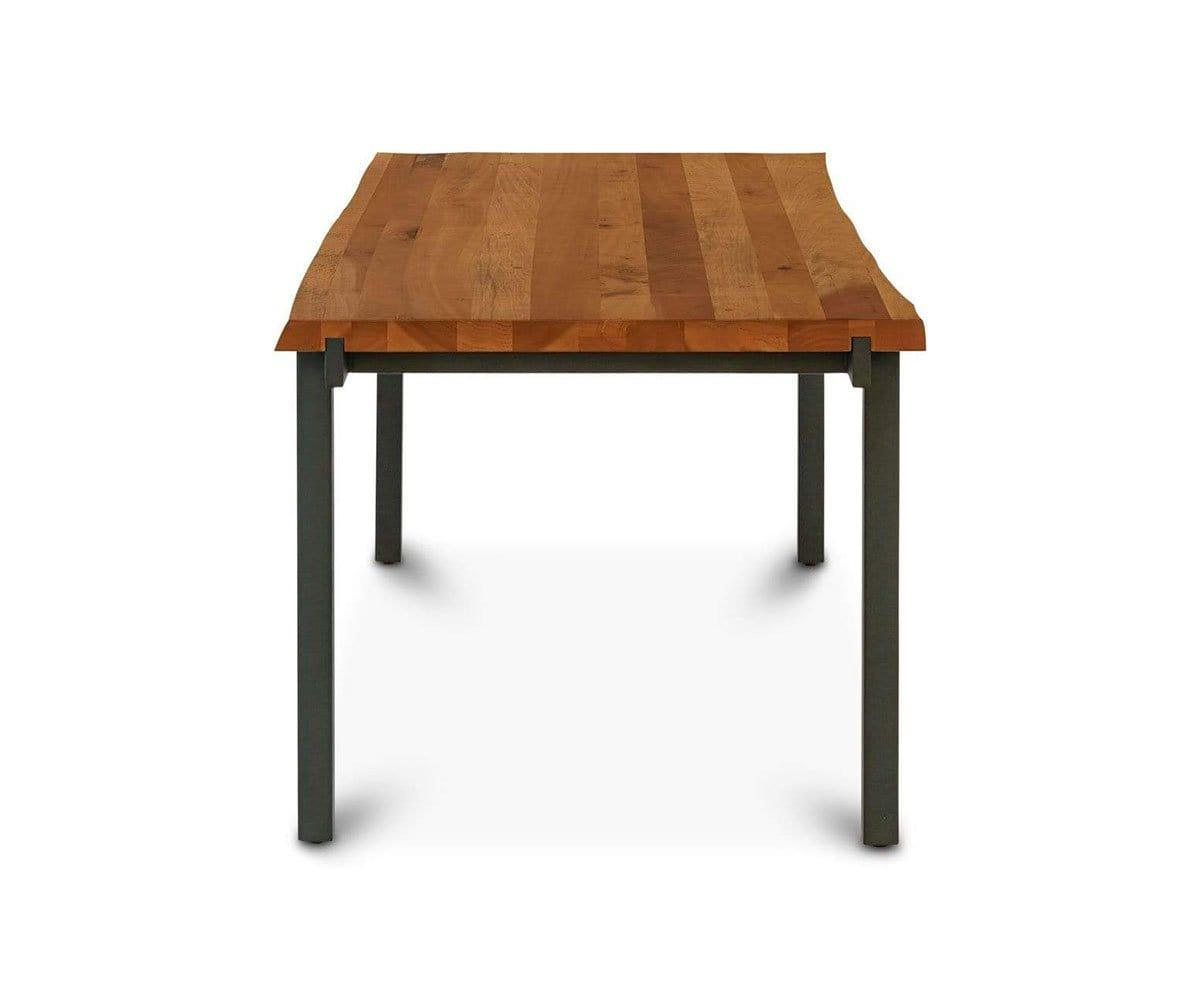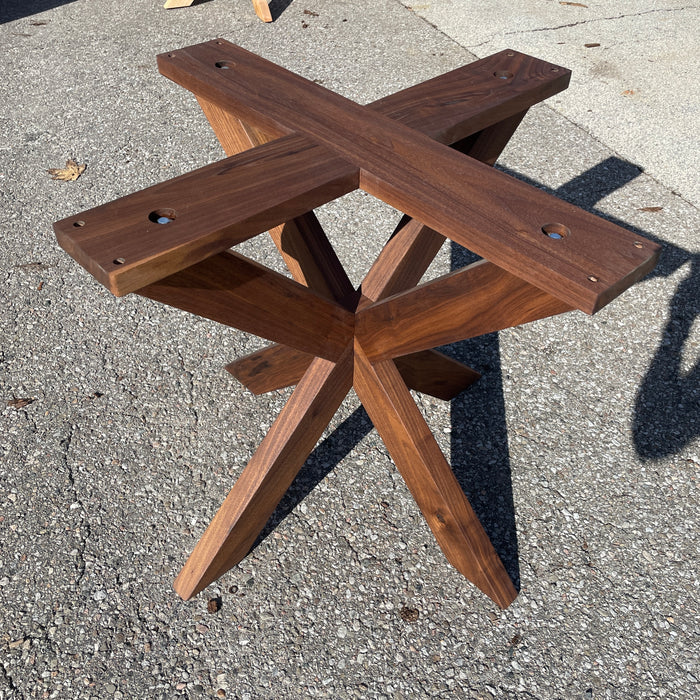Durable Craftsmanship in Every Piece of Dining Table Legs Wood Available
Durable Craftsmanship in Every Piece of Dining Table Legs Wood Available
Blog Article
Checking Out the Different Types of Eating Table Legs Wood for Your Eating Area
The option of dining table legs timber can exceptionally impact both the functional and aesthetic qualities of your dining room. Strong wood options, such as oak and walnut, supply a traditional appearance with unparalleled longevity, while crafted timber options offer ingenious designs that imitate the splendor of natural grains. In addition, the growing pattern of reclaimed timber presents a sustainable component that interest ecologically aware consumers. As we check out these numerous options, it comes to be important to take into consideration not only the aesthetic allure but likewise the sensible implications of each material option. What variables should assist your decision?
Strong Timber Options

Unlike crafted products, strong wood is much less prone to warping and damage over time when correctly preserved. Each piece of strong wood is distinct, showcasing specific qualities that include to the beauty and character of the dining table.
Furthermore, strong timber can be ended up in countless means, varying from natural oils to stained surfaces, permitting house owners to individualize their furnishings to match their design. In summary, selecting strong wood for eating table legs not only guarantees structural honesty but also improves the visual appeal of the dining area, making it a worthwhile financial investment for any type of home.
Engineered Wood Alternatives

Plywood, built from several layers of wood veneer, is especially strong and stable, making it an outstanding choice for eating table legs. Its split structure permits it to endure modifications in humidity and temperature better than conventional solid timber. MDF, on the various other hand, uses a smooth surface for painting or veneering, allowing designers to attain a polished look while maintaining structural stability.
When choosing crafted wood alternatives, it is important to take into consideration the intended usage and preferred visual. These products not just boost the capability of eating areas yet also allow for greater design flexibility, making sure that traditional and modern designs can exist side-by-side harmoniously.
Reclaimed Timber Includes
Redeemed wood provides a distinct blend of sustainability and character, making it an increasingly popular choice for eating table legs. Sourced from old barns, manufacturing facilities, and other frameworks, redeemed timber symbolizes a history that new products merely can not reproduce. Each item carries its very own story, noted by unique flaws, knots, and varying grain patterns, which add to a table's one-of-a-kind visual appeal.
Along with its visual beauty, reclaimed wood is an eco-friendly choice. By repurposing previously made use of materials, it reduces the need for new lumber, thus aiding to save forests and decrease waste. This aligns with an expanding consumer choice for sustainable techniques in furnishings.
Additionally, reclaimed timber is commonly much more sturdy than recently collected wood as a result of its age. The natural drying out process that redeemed wood undertakes lead to a denser and more powerful product, making it less at risk to warping and splitting. This boosts the longevity of eating tables, allowing them to endure the roughness of daily usage.
Softwood vs. Wood
When picking dining table legs, comprehending the differences between softwood and wood is essential for accomplishing both visual and practical objectives. Softwoods, originated from coniferous trees, such as want and cedar, are identified by their lighter weight and ease of control. They generally display an even more rustic appearance, making them appropriate for country-style or informal eating spaces. Softwoods are generally less resilient than hardwoods, which can be a factor to consider for family members or those looking for long life in their furnishings.
On the other hand, hardwoods, sourced from deciduous trees like oak, maple, and cherry, are renowned for their density, toughness, and resilience. The elaborate grain patterns and rich shades of hardwoods Read More Here offer a timeless and innovative allure, making them suitable for official dining setups. While woods have a tendency to be a lot more costly and heavier, their resilience versus deterioration typically validates the investment.
Ultimately, the selection in between softwood and hardwood for eating table legs must align with your design vision, use requirements, and budget plan, guaranteeing that your dining area shows your individual design while remaining useful with time.

Therapies and surfaces
The aesthetic charm and durability of table legs can be substantially improved with numerous Full Report finishes and therapies. These processes not only shield the wood from damages yet likewise raise its appearance, allowing it to enhance varied interior designs.
One usual therapy is discoloring, which penetrates the timber and enhances its all-natural grain while including color. Stains provide an abundant, sophisticated look, enabling homeowners to match their furnishings with existing decoration. Alternatively, clear surfaces such as polyurethane or varnish create a safety layer without changing the timber's original hue, ensuring durability versus wear and tear.
In addition, all-natural oils, like tung or linseed oil, nourish the timber and offer a refined shine, all while being environmentally friendly. These oils allow the surface area to breathe, protecting against wetness buildup and possible warping.
For those looking for a rustic charm, troubled or weather-beaten coatings can be applied to create an aged other appearance, including character to the piece. Inevitably, the choice of coatings and therapies depends upon individual preference, desired aesthetic appeals, and the specific timber type, making it vital to think about these factors when choosing dining table legs for your area.
Conclusion
In conclusion, the selection of eating table leg materials significantly influences both the aesthetic and functional facets of an eating room. Solid timbers, engineered options, and reclaimed options each offer distinctive advantages, providing to various choices and demands. Recognizing the differences between hardwoods and softwoods, together with ideal surfaces and therapies, allows for educated decision-making. Ultimately, the selection of timber type need to line up with wanted design, durability, and environmental factors to consider, boosting the overall dining experience.
The option of dining table legs timber can profoundly impact both the aesthetic and functional high qualities of your dining area - Dining Table Legs Wood. Strong wood alternatives, such as oak and walnut, offer a timeless look with unparalleled toughness, while engineered timber choices supply ingenious designs that resemble the richness of natural grains. Solid timber provides a classic quality that can elevate the general layout of an eating space. Each item of solid wood is one-of-a-kind, showcasing specific attributes that add to the beauty and character of the eating table
Furthermore, redeemed wood is frequently more durable than newly gathered timber due to its age.
Report this page